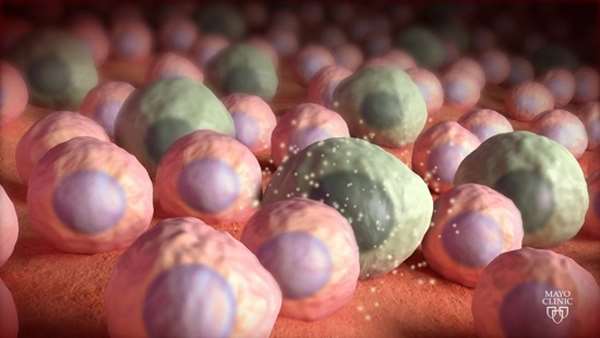Anti-aging discovery reveals importance of immune system in clearing old cells
A compelling study from the Weizmann Institute of Science has revealed a new anti-aging strategy designed to help the immune system remove old and dysfunctional cells from the body.
A compelling study from the Weizmann Institute of Science has revealed a new anti-aging strategy designed to help the immune system remove old and dysfunctional cells from the body. The initial animal experiments promisingly restored youthful characteristics in old mice, suggesting improving immune system surveillance may be an effective anti-aging therapy.
Senescent cells have long been an important research target for scientists investigating human aging. As we get older more and more of our cells become senescent, meaning they no longer replicate yet still remain metabolically active. A great deal of age-related and inflammatory diseases are implicated in the accumulation of senescent cells.
Some researchers are working on ways to reverse the process of cellular senescence, effectively making these older cells behave as if they are young again. Other researchers are investigating exactly how the body clears senescent cells from its system, and why the efficacy of this process decreases with age.
The new Weizmann research first set out to better understand the role our immune system plays in removing senescent cells from the body. The study discovered that a protein called perforin plays a fundamental role in immune surveillance, especially in relation to the clearance of senescent cells. In a mouse model with a silenced perforin gene it was observed that the animals suffered from an increased accumulation of senescent cells and faster rate of age-related disease.
The research then administered these perforin-diminished animals with a newly developed drug called ABT-737, which has previously been found to enhance clearance of senescent cells in both laboratory and animal experiments. The animals treated with the experimental drug displayed physical and behavioral improvements resembling younger healthy mice.
All this suggests that the immune system plays an important role in clearing senescent cells from the body and an age-related decline in immune system function may be a vital part of many basic age-related pathological symptoms in lifespan and health span. Unfortunately, the specific drug used in these experiments, ABT-737, is not transferable to safe human uses.
The drug was originally developed as a cancer treatment and was designed to inhibit specific proteins that block cellular death. Some cancers are known to use these particular proteins as a way of hiding from the body"s immune system. Unfortunately, early human clinical trials revealed that, while the drug did show promising anti-cancer potential, it also had terrible side effects, producing a condition called thrombocytopenia in which the levels of platelets in blood are lowered.
So, although this drug treatment may not be the anti-aging breakthrough many are waiting for, the underlying discovery suggests improving the immune system"s ability to remove senescent cells could be an effective youth-restoring therapy.
Reference:https://www.nature.com/articles/s41467-018-07825-3#ref-CR67





ارسال به دوستان